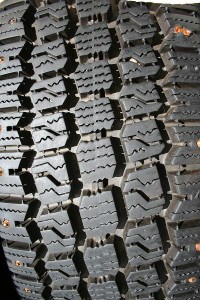 Oregon voters may be asked to decide next year whether the state should ban studded tires.
Oregon voters may be asked to decide next year whether the state should ban studded tires.
A Portland man, Jeff Bernards, is planning to collect 80,000 signatures to put a measure banning studded tires on the November 2012 ballot, the Baker City Herald reported.
The Oregon Supreme Court this past week approved the wording of Bernards’ proposed ballot measure.
The use of studded tires has been controversial since 1974, when state transportation officials recommended the Legislature ban them.
Opponents say studded tires cause millions of dollars in damage to state highways each year and tests show tires without studs give nearly as much traction in the most common road conditions. But proponents say studded tires prevent potentially fatal accidents.
The question has never gone before voters.
“I hope will all my heart that someday Oregon will follow the path of common sense and ban studded tires,” Bernards wrote recently on the Blue Oregon website.
Rocky Brown, co-owner of Lew Brothers Les Schwab Tire store in Baker City, said he installs studded tires on both of his personal vehicles each winter.
On glare ice, studded tires make a big difference in traction, Brown said., but he also acknowledged that drivers face those conditions only about 1 to 2 percent of the time.
In other road conditions, Brown said, studless tires “do a great job.”
Tires without studs are growing in popularity for winter driving and they’re also less expensive.
One of the most-cited figures by opponents is the Oregon Department of Transportation’s (ODOT) estimate that studded tires cause $42 million per year in damage to state highways. That estimate, which is based on a 1994 analysis by ODOT, doesn’t include damage to county roads or city streets. But that number was revised downward to $11 million in a 2000 report because not all the damage caused by studded tires leads to a premature failure of pavement.
The 2000 report notes its damage estimates from 1994 were based on the steel tire studs in use then, but lightweight studs are in use now and they cause less damage.
Engineers have compared the effectiveness of studded, studless and all-season tires in conditions ranging from dry pavement to hard ice, and at a variety of air temperatures.
These tests usually involve measuring how many feet different types of vehicles need to stop from a set speed.
Among the more detailed studies were ones done in 1994 and 1995 in Fairbanks, Alaska, comparing studded, studless and all-season tires mounted on three vehicles: a front-wheel drive car, a rear-wheel drive car, and a rear-wheel drive pickup truck.
Testers measured the stopping distance, in feet, for each vehicle going from 25 mph to a stop on icy pavement. All three vehicles stopped in the shortest distance when equipped with studded tires.
The advantage in distance, compared with studless tires, ranged from 5.5 feet (two-wheel drive pickup) to 10.8 feet (rear-wheel drive car) to 20 feet (front-wheel drive car).
On pavement covered with packed snow, however, the studless tires had a shorter stopping distance with the rear-wheel drive car (8.7 feet) and the front-wheel drive car (2.1 feet), while the studded tires performed better on the rear-wheel drive pickup (10.7 feet shorter).
Was this article valuable?
Here are more articles you may enjoy.

 OpenAI And Microsoft Sued Over Murder-Suicide Blamed on ChatGPT
OpenAI And Microsoft Sued Over Murder-Suicide Blamed on ChatGPT  Musk’s xAI Faces California AG Probe Over Grok Sexual Images
Musk’s xAI Faces California AG Probe Over Grok Sexual Images  Palantir Poaching Suit Called ‘Scare’ Tactic by Ex-Employees
Palantir Poaching Suit Called ‘Scare’ Tactic by Ex-Employees  First Brands Judge Approves Examiner to Probe Fraud Allegations
First Brands Judge Approves Examiner to Probe Fraud Allegations 